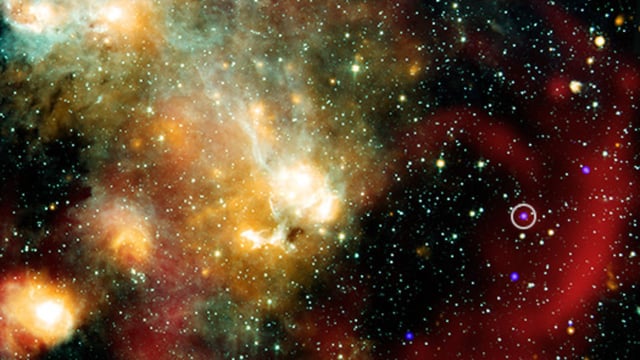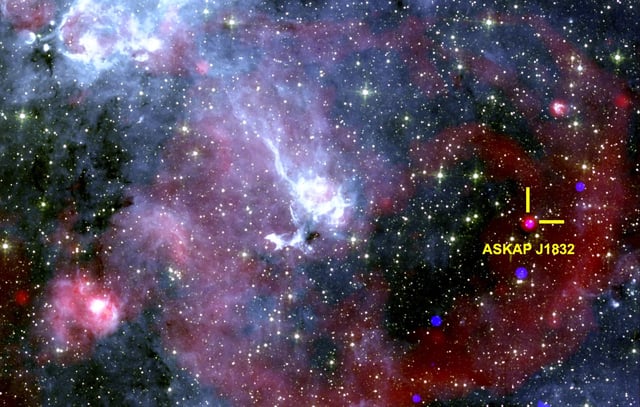Overview
- ASKAP J1832-0911, identified by the ASKAP telescope and confirmed with Chandra, emits synchronized two-minute bursts of radio waves and X-rays on a 44-minute cycle.
- The source lies about 15,000 light-years away in the Milky Way’s Scutum constellation and appears coincidentally projected against a supernova remnant.
- Initial observations in February 2024 recorded strong multiwavelength pulses, but by August the radio output was 1,000 times weaker and X-rays were undetectable.
- Scientists are weighing models—including an aging magnetar, a highly magnetized white dwarf in a binary system or new stellar physics—yet no theory fully explains its unique emissions.
- As the first long-period radio transient observed in X-rays, ASKAP J1832-0911 challenges existing pulsar and neutron star paradigms and spurs plans for wider multiwavelength surveys.



